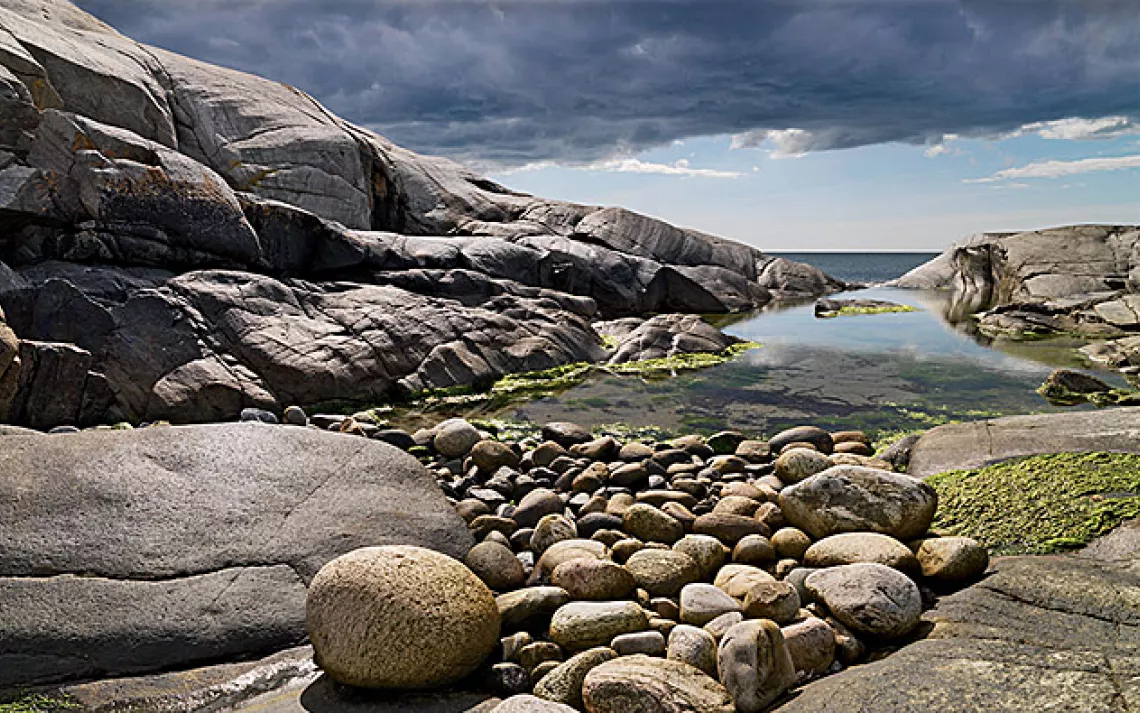Koster Islands, Sweden
Shaped by ancient ice and the lash of wind and water, the Koster Islands' landscape is geologically distinct from that of mainland Sweden

Shaped by ancient ice and the lash of wind and water, the Koster Islands' landscape is geologically distinct from that of mainland Sweden. | Photo by Tore Hagman
Rain and wind lash at my Gore-Tex as I make my way up a trail on the island of Ursholmen toward Sweden's westernmost lighthouse. On a fine day, I'd linger to take in the solitude, the salty air, and the stark outer-archipelago scenery. But today the sea is dark and opaque, and the land—a treeless expanse of gray rock and brown and green grasses, with a cluster of decaying buildings—feels like a place where human visitors are tolerated, but only just. Looking seaward, I find it hard to fathom the unseen wonderland beneath the dreary surface.
"I can only think of one experience which might exceed in interest a few hours spent underwater, and that would be a journey to Mars." — William Beebe, deep-sea explorer
It's quite a change from yesterday, when I biked and hiked under sunny skies on North and South Koster, the archipelago's main islands. I wandered through woodlands and fields to secluded inlets and stood atop the rocky heights of the Valfjäll lookout. That evening, in the Scandinavian summer's lingering twilight, a thunderstorm roared in, rattling the windows of my rustic cabin and illuminating the northern sky with pulses of lightning.
These islands, it turns out, are most treasured because of something I can't see: an underwater environment so diverse and unusual that the Swedish government recently enshrined the Kosterhavet Marine National Park—the nation's first such sanctuary. A deep undersea channel to the east abuts shallow waters, creating a string of habitats where intertidal oysters and mussels thrive in proximity to corals, harbor seals, and even an occasional whale.
Back on the mainland on this dark afternoon, I drive to the aquarium at the Sven Lovén Centre for Marine Sciences. As I gaze through the glass at creatures both familiar and bizarre—skinny pipefish, Technicolor sea stars, soccer-ball sponges—I get a glimpse of the hidden richness that thrives here.
 The Magazine of The Sierra Club
The Magazine of The Sierra Club



